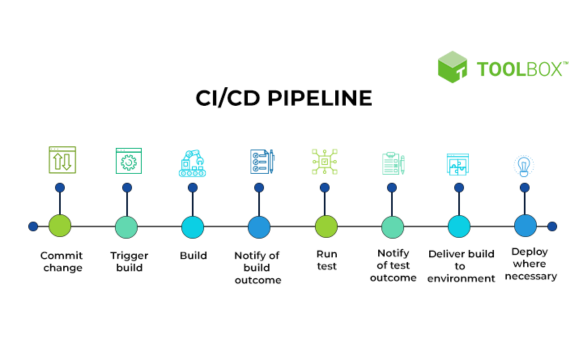In today's digital world, software quality can make or break a business. Whether you're developing a mobile app, a web platform, or enterprise software, effective testing is crucial to ensuring your product meets user expectations and performs flawlessly. Let's dive into the best practices for software testing that can help you deliver high-quality software consistently.
1) Start Testing Early and Often
Testing is no longer an afterthought, limited to the final stages of the development cycle. Modern software development demands a "shift-left" approach, where testing begins as early as possible and continues throughout the development process.
For example, Amazon's development teams practice continuous testing, where automated tests run with every code change. This approach allows them to catch and fix issues early, reducing the cost and time associated with late-stage bug fixes.
Pro Tip #1: Implement unit tests from the start of your project. These small, focused tests can catch issues at the code level before they snowball into larger problems.
2) Embrace Test Automation
While manual testing still has its place, test automation is essential for keeping pace with rapid development cycles. Automated tests can run quickly and repeatedly, ensuring consistent results and freeing up human testers to focus on more complex scenarios.
Google, for instance, runs over 150 million tests every day across their various products. This massive scale of testing would be impossible without extensive automation.
Pro Tip #2: Start with automating your most critical and repetitive test cases. As you build your automation suite, aim for a healthy mix of unit tests, integration tests, and end-to-end tests.
3) Prioritize Test Cases Based on Risk
Not all features or functionalities carry the same weight. A risk-based testing approach helps you focus your efforts where they matter most.
Consider a financial application: testing the accuracy of transaction processing would take priority over testing the color scheme of the user interface. By identifying high-risk areas and critical user journeys, you can allocate your testing resources more effectively.
Pro Tip #3: Use techniques like risk assessment matrices to prioritize your test cases. Factor in both the likelihood of failure and the potential impact on users or business operations.
Strategies for Better Software Testing: Learn the best practices for effective software testing
4) Maintain a Diverse Testing Environment
Users access software on a variety of devices, operating systems, and browsers. Your testing strategy should reflect this diversity to ensure a consistent experience across different platforms.
Netflix, for example, tests its streaming service on over 2,000 different devices to ensure smooth playback for all users, regardless of their setup.
Pro Tip #4: Create a test matrix that covers your target platforms. Use a combination of real devices and emulators/simulators to balance comprehensive coverage with cost-effectiveness.
5) Leverage Data-Driven Testing
Data-driven testing involves using different sets of input data to test the same functionality, allowing you to cover a wide range of scenarios efficiently.
For instance, an e-commerce platform might use data-driven tests to validate its checkout process with various combinations of products, shipping options, and payment methods.
Pro Tip #5: Maintain separate test data files that can be easily updated or expanded. This approach makes it simpler to add new test scenarios without modifying the test scripts themselves.
6) Practice Continuous Integration and Continuous Development (CI/CD)
Integrating testing into your continuous integration pipeline ensures that every code change is automatically tested before it's merged into the main codebase.
Spotify uses CI/CD to run over 20,000 tests for every code change, allowing them to deploy updates to their music streaming service multiple times a day with confidence.
Pro Tip #6: Set up a CI/CD pipeline that automatically runs your test suite whenever code is pushed to your repository. Configure it to block merges if critical tests fail.
Discover the software testing process: Software Testing Process: Then & Now comparison
7) Don't Neglect Non-Functional Testing
While functional testing is crucial, non-functional aspects like performance, security, and usability are equally important for overall software quality.
Take Airbnb as an example. They conduct extensive performance testing to ensure their platform can handle peak booking periods, such as holidays, without slowdowns or crashes.
Pro Tip #7: Include load testing, stress testing, security scans, and usability testing in your overall testing strategy. These tests can uncover issues that functional tests might miss.
8) Encourage Collaboration Between Developers and Testers
Breaking down silos between development and testing teams can lead to more efficient testing and higher-quality software.
Microsoft has embraced this approach with its combined engineering teams, where developers and testers work closely together throughout the development process.
Pro Tip #8: Implement practices like pair programming and collaborative test case design. Encourage developers to write testable code and involve testers in code reviews.
9) Continuously Improve Your Testing Process
The field of software testing is constantly evolving, with new tools and methodologies emerging regularly. Make a habit of reviewing and refining your testing processes to stay effective.
Facebook, for instance, regularly updates its testing infrastructure and practices to keep pace with its rapidly evolving products and growing user base.
Pro Tip #9: Conduct regular retrospectives to identify areas for improvement in your testing process. Stay informed about new testing tools and techniques that could benefit your team.
10) Measure and Monitor Test Effectiveness
It's not enough to simply run tests; you need to ensure your testing efforts are actually improving software quality. Track metrics like defect detection rate, test coverage, and the number of escaped defects to gauge the effectiveness of your testing.
LinkedIn uses a variety of metrics to monitor their testing efforts, including the "defect escape ratio" which measures how many bugs make it to production versus those caught in testing.
Pro Tip #10: Implement tools to track key testing metrics. Regularly review these metrics with your team to identify trends and areas for improvement.
Conclusion
Effective software testing is a critical component of delivering high-quality software in today's fast-paced digital landscape. By embracing these best practices - from early and continuous testing to leveraging automation and data-driven approaches - you can significantly enhance your testing efforts and ultimately deliver better software to your users.
Remember, the key to successful testing lies not just in following these practices, but in adapting them to your specific context and continuously refining your approach.
Are you ready to take your software testing to the next level? QAlify offers comprehensive software testing services tailored to your unique needs. Contact us today to learn how we can help you deliver flawless software experiences to your users. Let's work together to build a testing process that drives quality, efficiency, and success for your software projects. 









